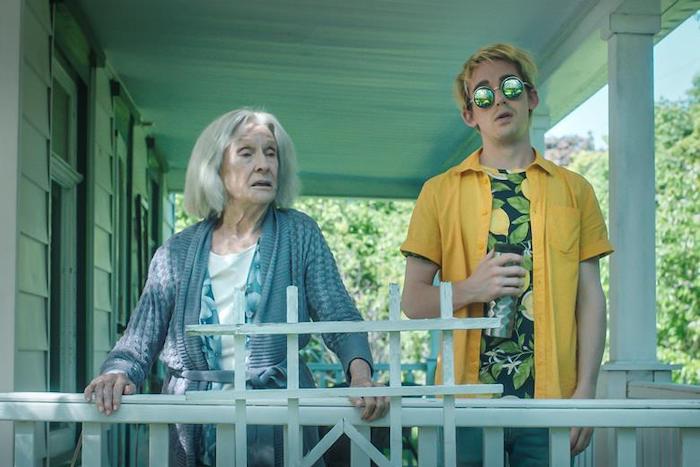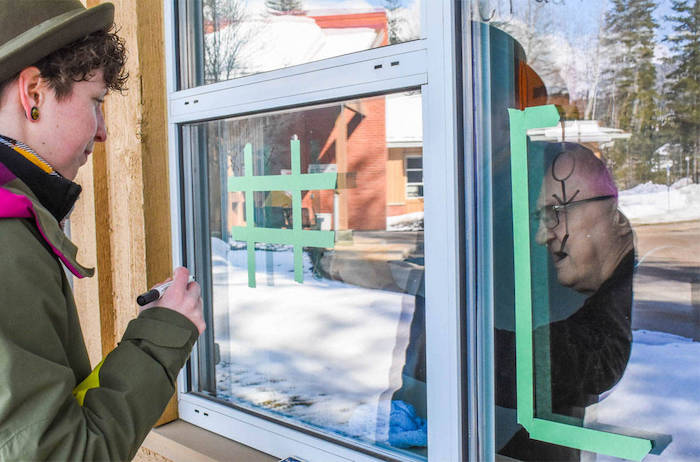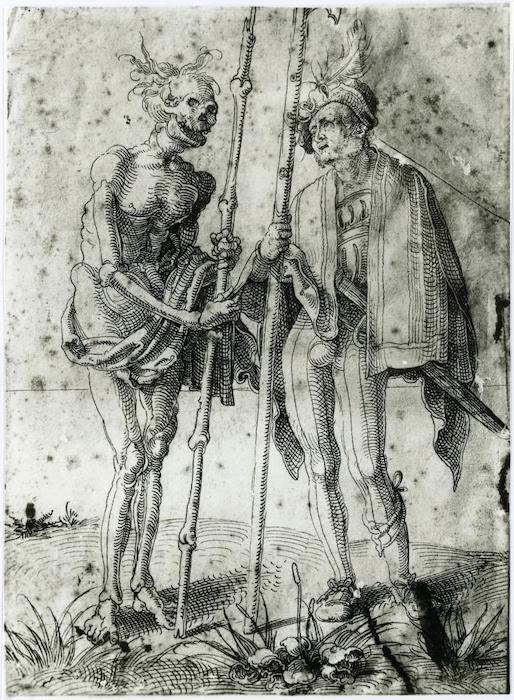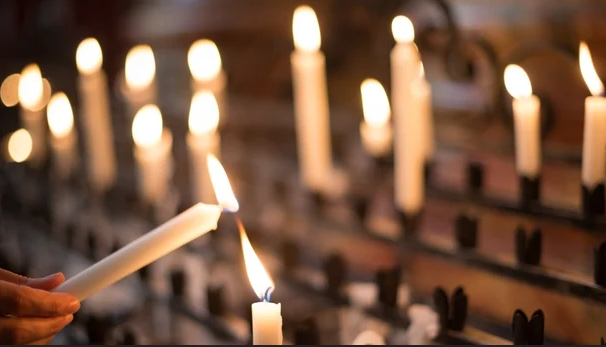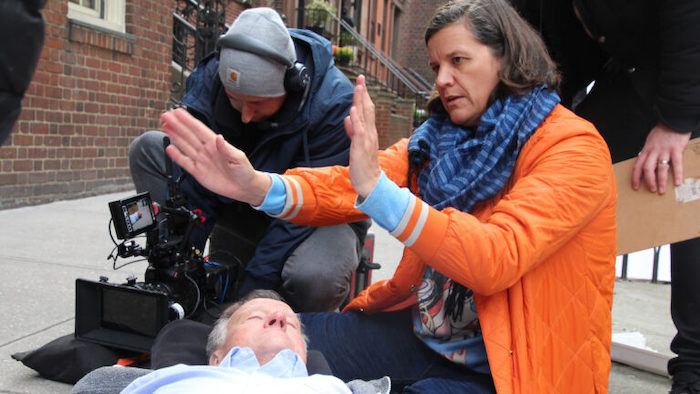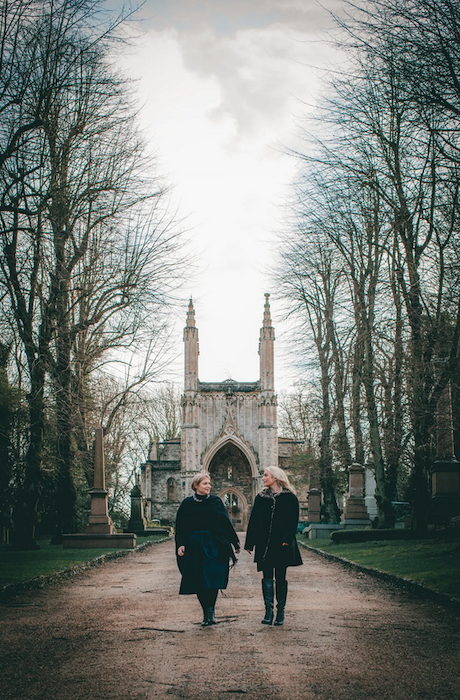
By Anna Lyons and Louise Winter
On a crisp January morning, we carried Camilla’s purple coffin, covered in blooming yellow flowers, into the Art Deco chapel of a London crematorium as Leonard Cohen sang “Dance Me to the End of Love”. Her family and friends watched from their homes in New York City via a livestream link. They’d recorded voice notes in advance, which we’d uploaded to the music system. Camilla’s coffin rested on the marble catafalque, as their pre-recorded words of love, gratitude and admiration were played. As the curtains closed around her coffin, a recording of Camilla’s niece reading “Phenomenal Woman” by Maya Angelou echoed around the empty crematorium chapel.
Camilla lived a creative, vibrant and full life, surrounded by a wide circle of like-minded people. She died alone on a Covid-19 ward in a central London hospital. In the saddest and loneliest of circumstances, Camilla’s family and friends found a way to come together to say goodbye to the person who had been a huge force in all their lives.an end-of-life doula and a progressive funeral director. Anna supports people who are living with life-limiting illness, their family and friends, helping people to live as good a life as possible right up until the very end. In her doula role, Anna also works with people who are grieving. Louise supports people to put together funerals that honour, heal and inspire. Our joint mission is to normalise death and dying as part of life and living. Over the last year, our work, both together and separately, has changed immeasurably.
Many of us won’t have any idea that, worldwide, in an average year, around 151,600 people die every single day. That’s almost two people every second. Annually, in the UK alone, more than 500,000 people die. However, the Covid-19 pandemic has meant that death and dying have infiltrated and impacted our lives in ways we’ve never experienced before. As a society, we’ve been faced with the shock of horrifying death tolls on a daily basis. We’ve been unable to be at the hospital deathbed of someone we love, or if we were allowed, we’ve had to say goodbye through multiple layers of PPE. Some of us have attended restricted funerals, unable to engage with the rituals and traditions associated with loss
Where do we turn when someone dies? In normal times, we’d seek solace in the presence of others, we’d allow ourselves to be supported by the people around us. They would bear witness to our losses, keeping us close and secure in the knowledge they were near. Devastatingly, Covid-19 has changed all of this. We couldn’t reach out. We couldn’t physically be there. We couldn’t hold someone’s hand as they lay dying in hospital or give a friend or colleague a much-needed hug after a funeral service. Human touch and connection were replaced by a phone, an iPad or a laptop screen – a cold, hard, reflective surface with its ability to “connect” reliant on an intermittent internet connection. With the absence of human connection, of closeness, of the comforting arms of someone we love, how and where did we find consolation and care? How could we find ways to come together while staying apart?
We are privileged that our jobs have allowed us to witness a myriad of inspiring and beautiful ways people have found to do just that. The humanity of NHS staff has astounded us time and again. One nurse stayed with a young woman who was dying alone in hospital long after his shift was over, reading aloud the text messages she was receiving from family and friends. We saw a frightened young woman transferred from the hospital where she was receiving cancer treatment to hospice so she could be surrounded by those who loved her at the end. Her family played her favourite music and soothed her with stories from her childhood in a peaceful room overlooking the hospice gardens. And a newly married man, with his entire life ahead of him, died unexpectedly in a tragic accident. Hospital staff, despite restrictive regulations, rushed to find extra PPE so his new wife could be there to kiss him for the final time.
We watched a fractured community come together to share flowers from their gardens when florists were closed and funeral flowers were unavailable. A simple request via the neighbourhood WhatsApp group resulted in a widow’s doorstep overflowing with blooms for her partner’s coffin. We witnessed how the rules of social distancing have necessitated some radical creative thinking and we worked with a celebrant who designed a long multi-coloured ribbon that everyone at the funeral could touch and hold to feel connected, while still remaining physically distant.
We were asked to help facilitate a worldwide Zoom by a group of friends when one of them died by suicide. They wore his favourite colours, shared photos of the fun they’d had together and raised a glass of champagne in his honour. Separated by a virus, united in grief, connected via technology.
Who would have thought just 18 months ago that today we’d be watching the people we love dying over FaceTime and attending their funerals via video link? Yet the unimaginable has become our everyday reality. And it’s within the reality of the unimaginable that we’ve seen the infinite beauty and endless possibility of the human spirit shine. We’ve learned we can bear the unimaginable. We are bearing the unimaginable. Through kindness, creativity and determination, we’ve found hope in our heartbreak, discovered that our vulnerabilities are also our strengths, and realised that our resilience is born from finding fragments of optimism and wonder in the most unlikely of places
Now, the promise of spring sits in the cool end-of-winter air. Gone are the dark afternoons; the frost and biting wind are slowly disappearing, allowing these March days to tenderly unfurl, reaching expectantly into the longer evening light. They bring with them a degree of anticipation, hope and new life. There is life. There is hope. There’s always hope.
‘We All Know How This Ends: Lessons about Life and Living from Working with Death and Dying’ by Anna Lyons and Louise Winter is available now.
Complete Article ↪HERE↩!


